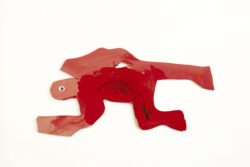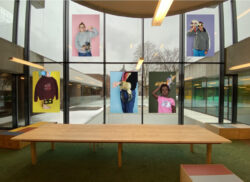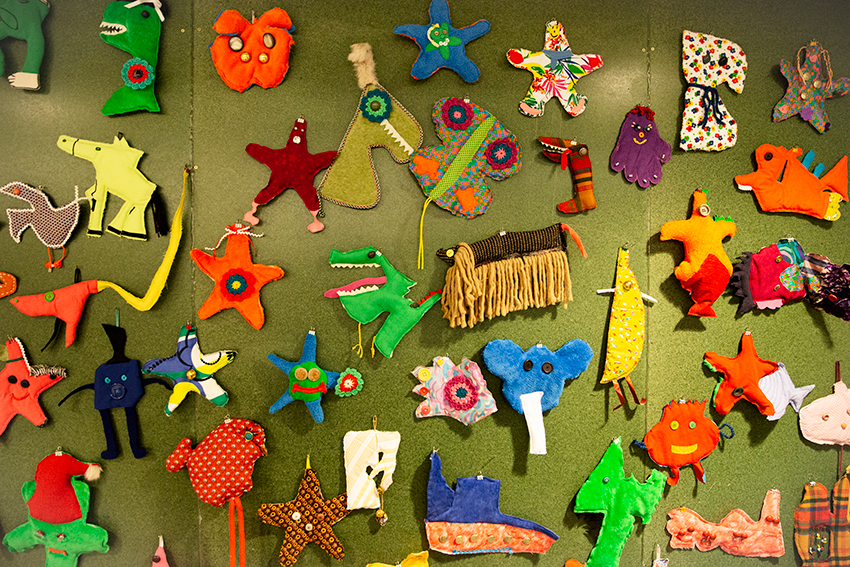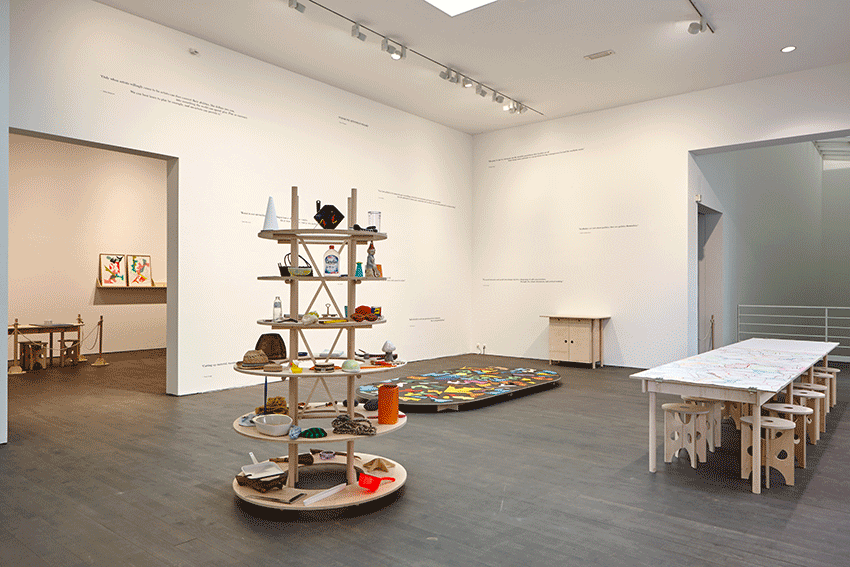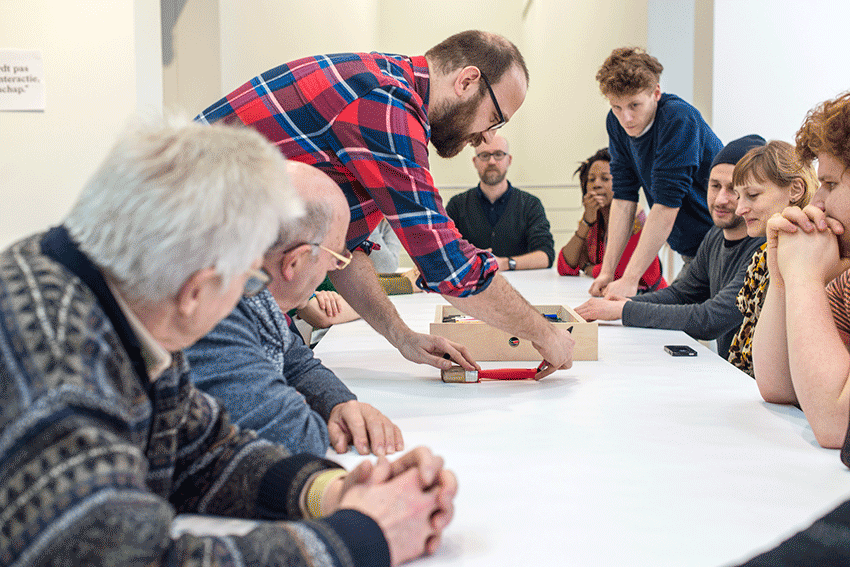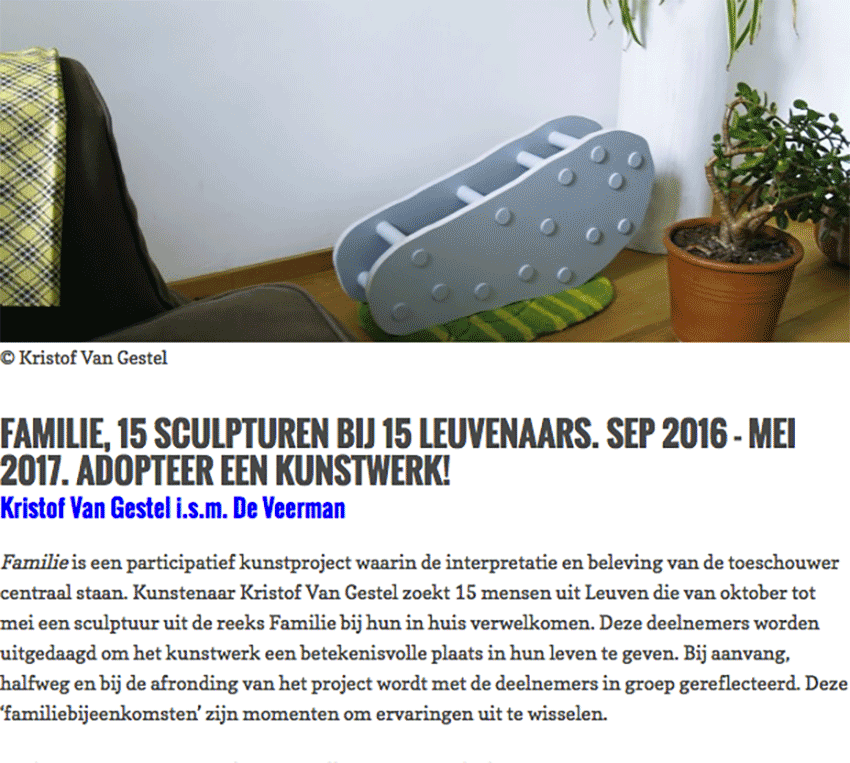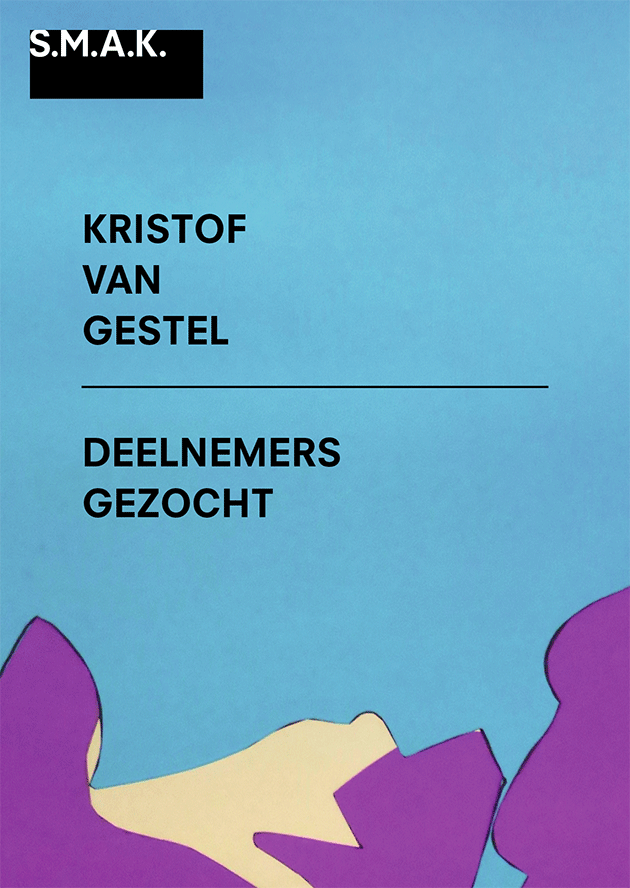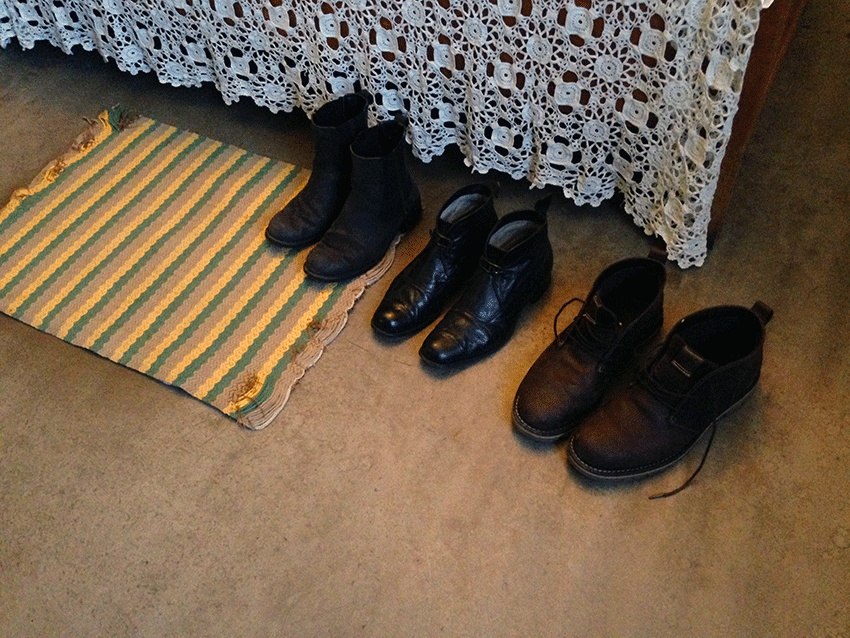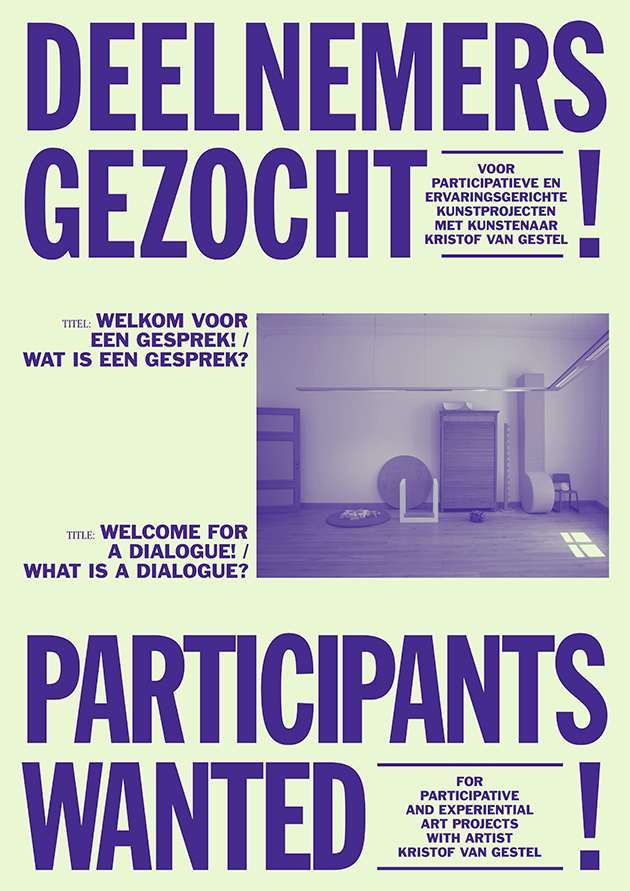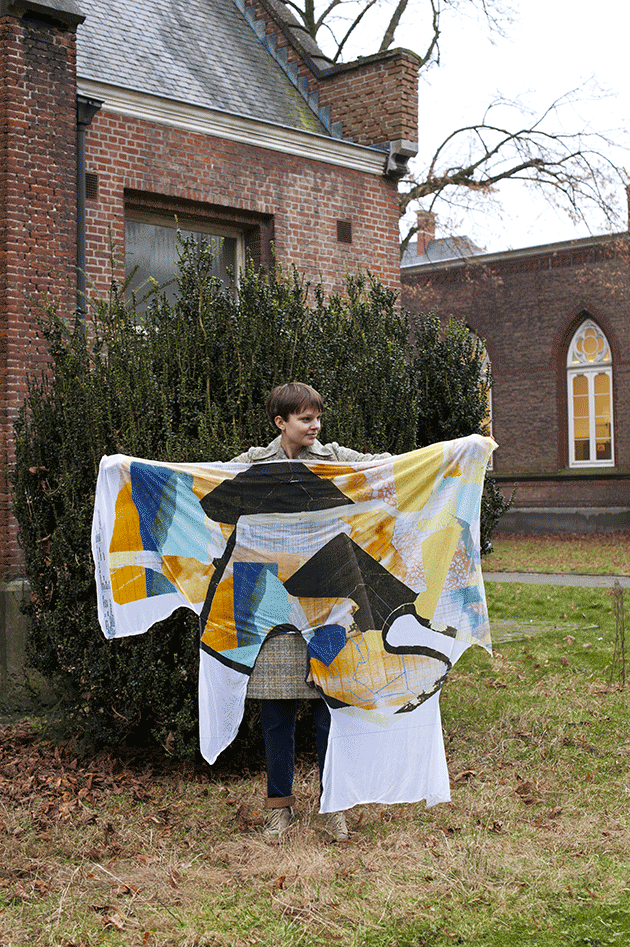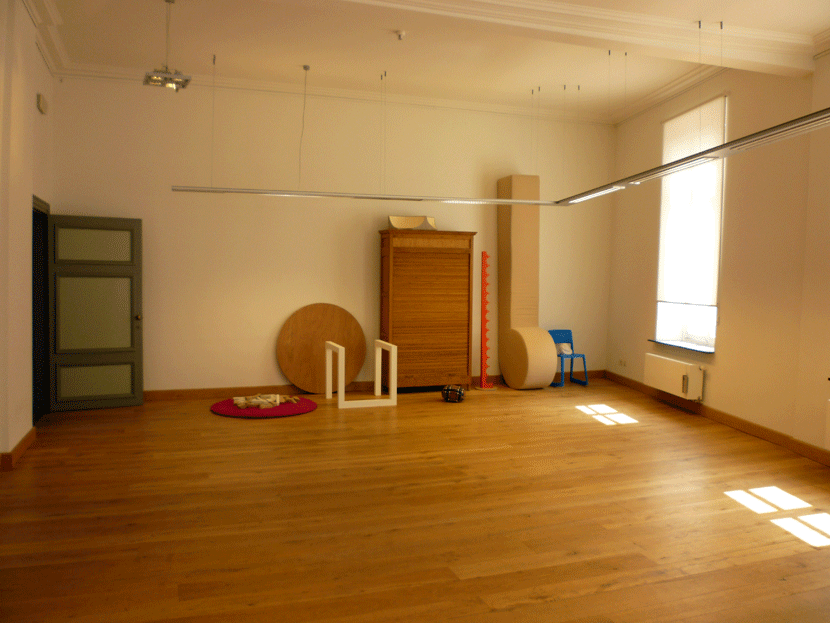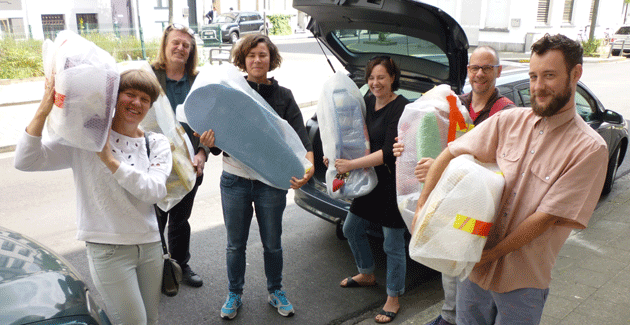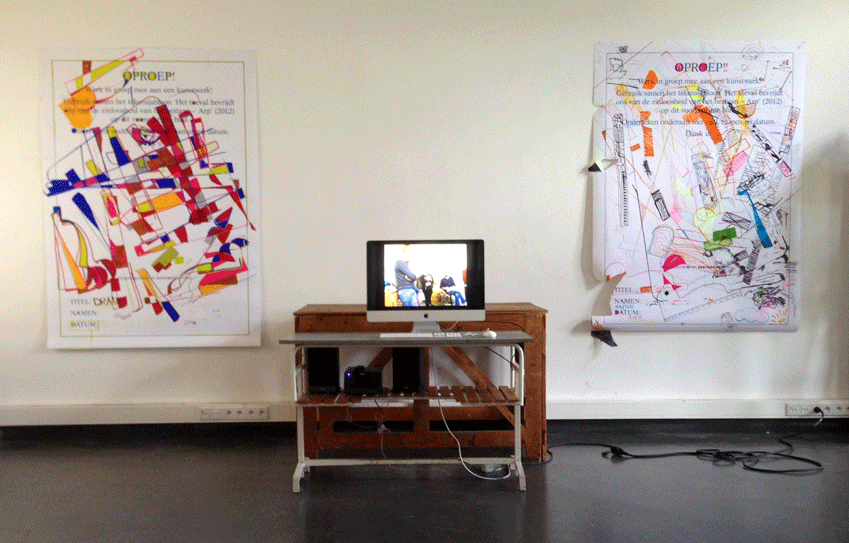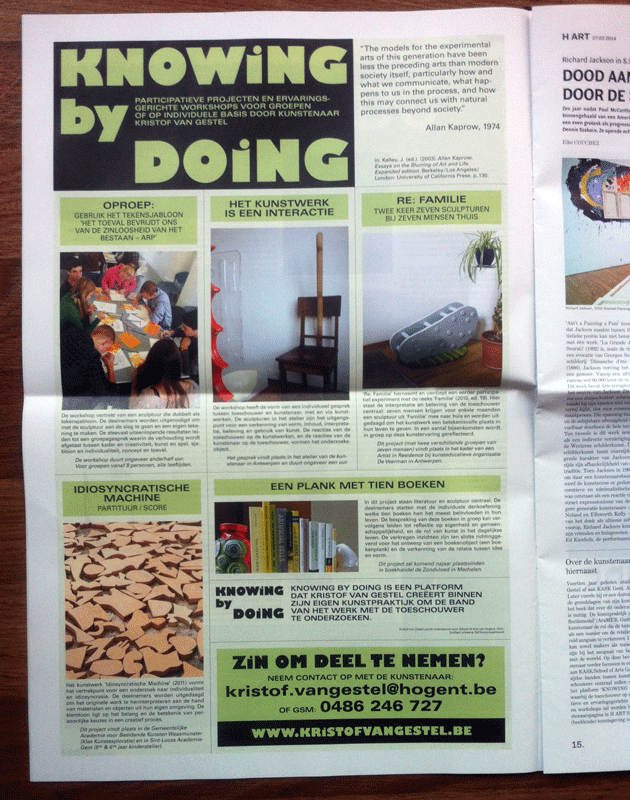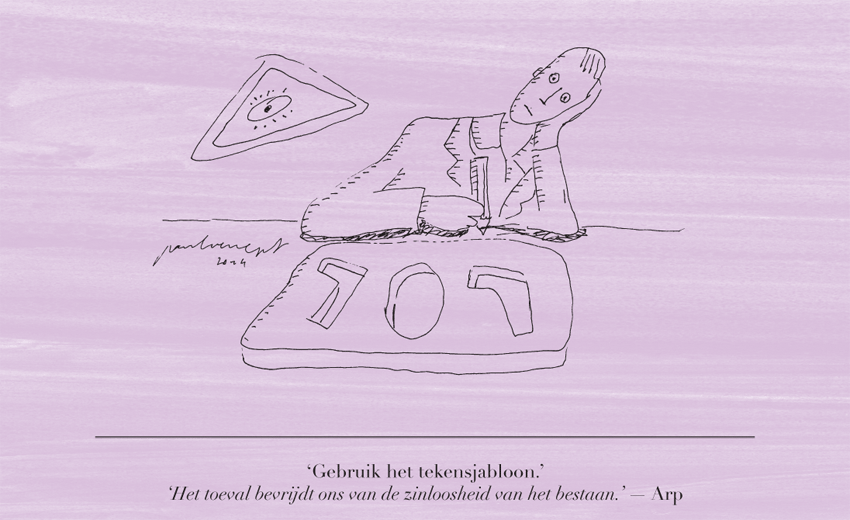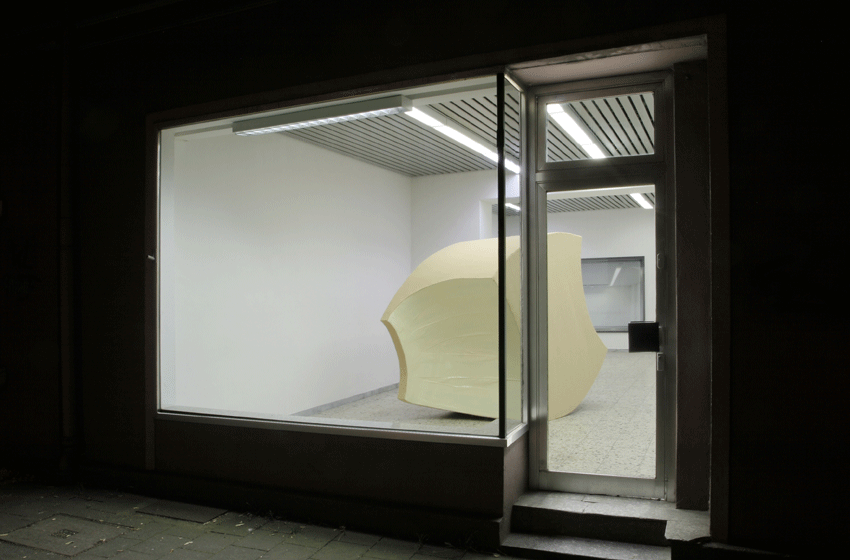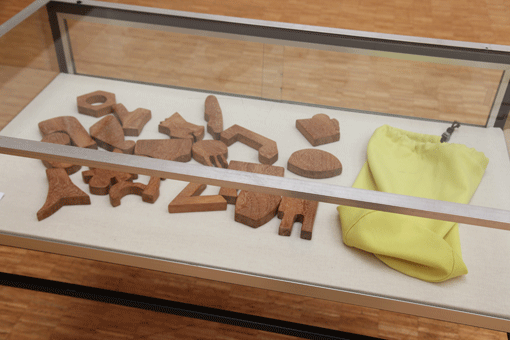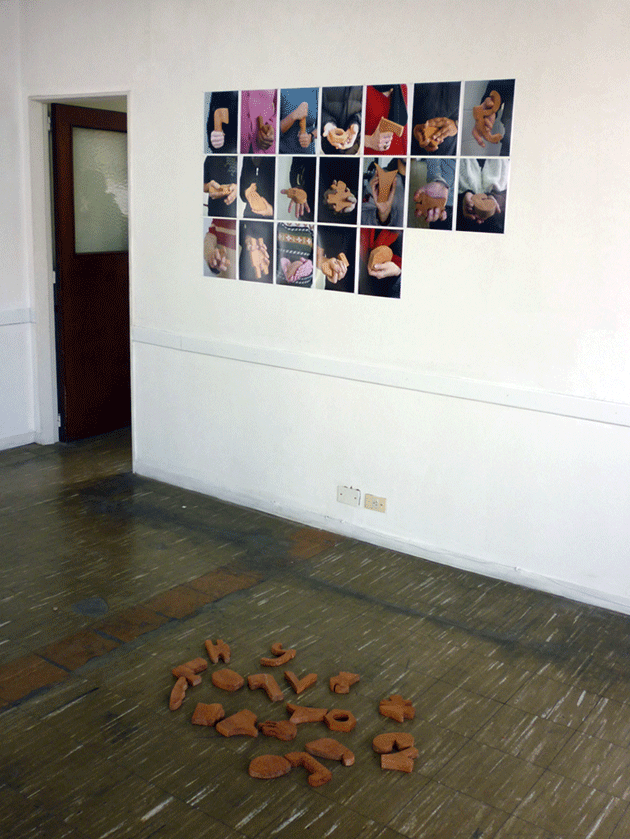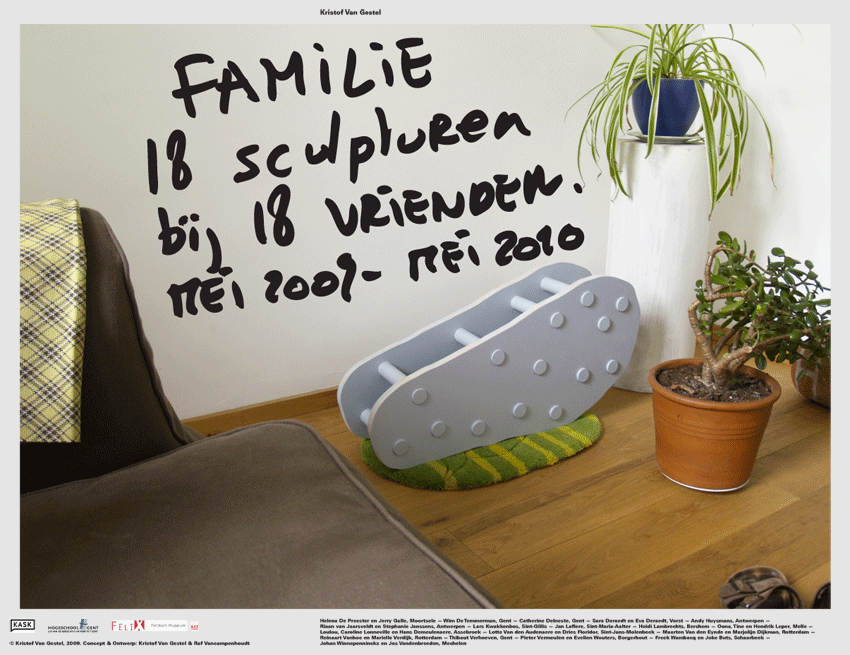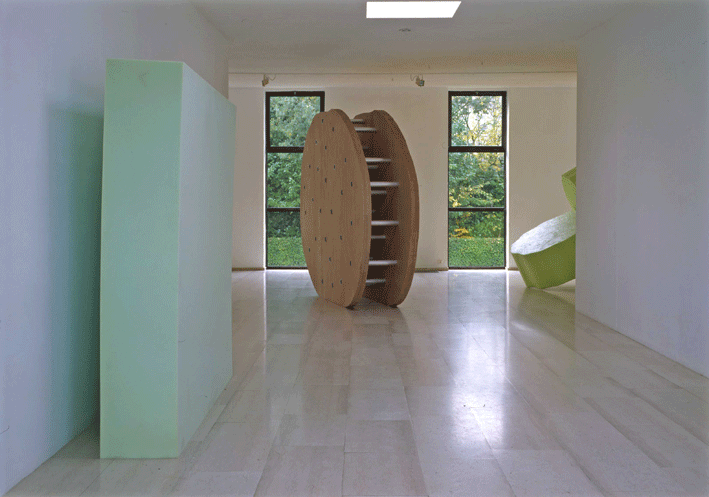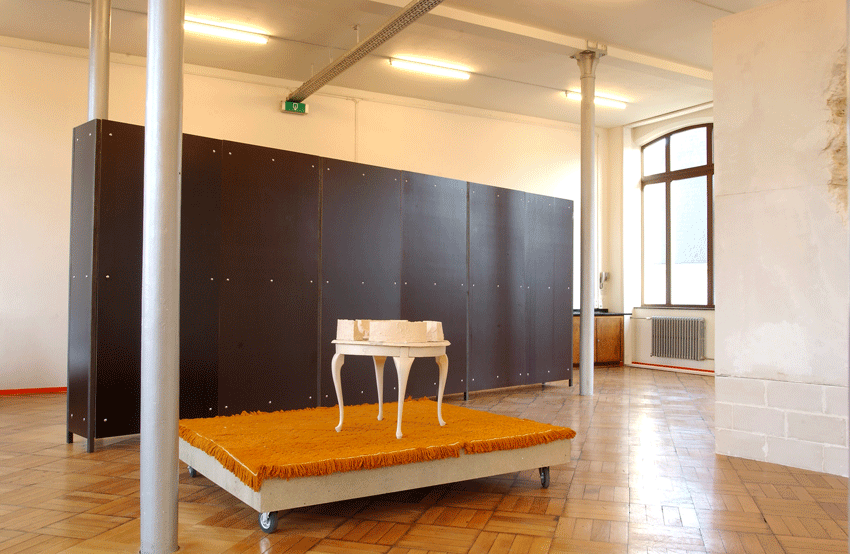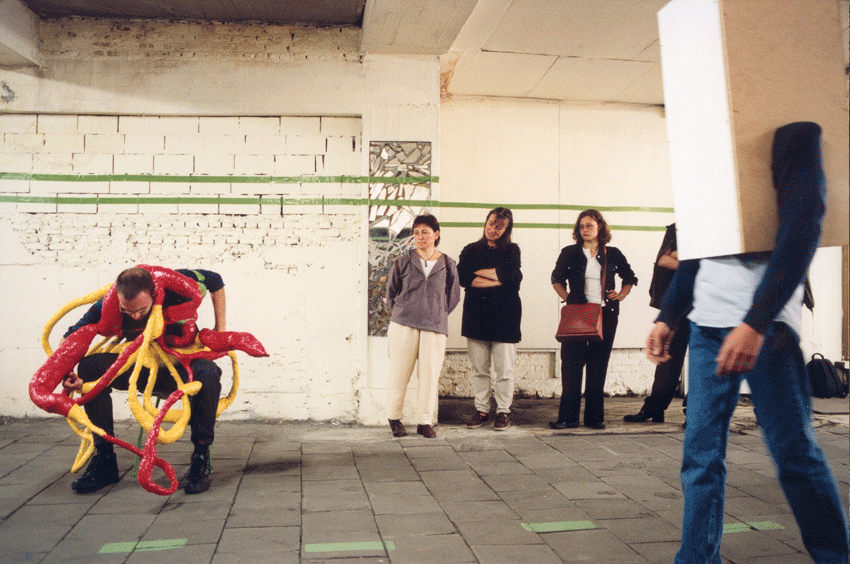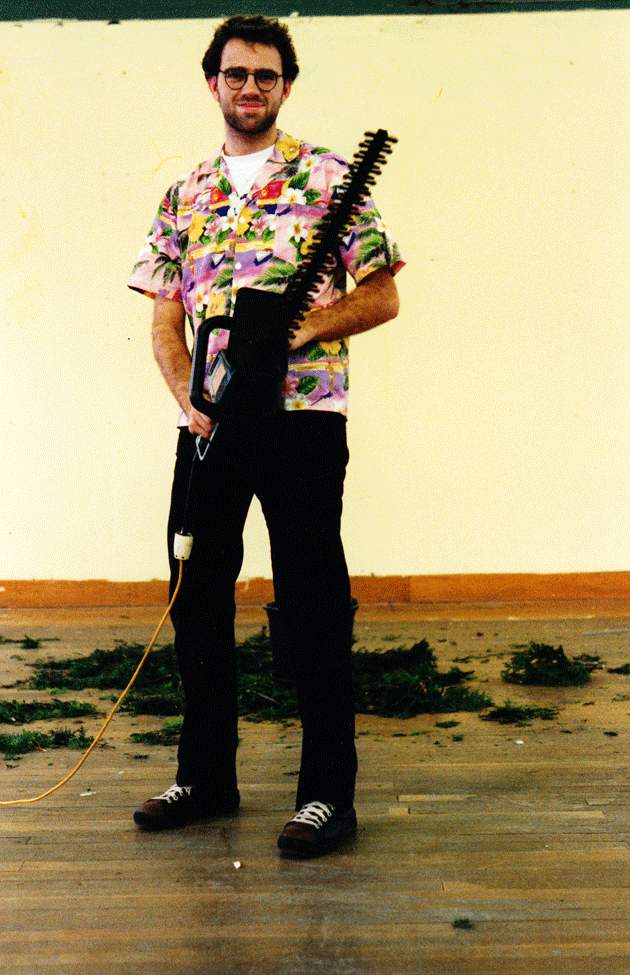
FOR ENGLISH VERSION SCROLL DOWN
On(th)echte dingen?
Over het werk van Kristof Van Gestel
Hoewel je het tegendeel makkelijk zou kunnen vermoeden, lijken de sculpturen van Kristof Van Gestel (°1976, Turnhout) minder abstract dan men op het eerste zicht zou denken. Zijn werk heeft een bepaald sculpturaal vocabulaire dat enerzijds zeer open is, maar anderzijds van een grote, bijna concrete helderheid en luciditeit getuigt. Enkel het feit dat Van Gestels beeldtaal meerduidig is, zou de indruk – of beter: de illusie – kunnen wekken dat zijn werk minder ‘leesbaar’ is…
Van Gestel spreekt over zijn sculpturen graag in termen van ‘dingen’. Maar dan niet in de context zoals wij doorgaans dingen begrijpen – namelijk als ontzielde, abstracte en onpersoonlijke ideeën of objecten – maar eerder als wezens, met een eigen persoonlijkheid die zich als het ware spontaan in Van Gestels omgeving ophouden, en er zelfs graag in schijnen te vertoeven. Binnen deze omgevingen lijken ze altijd te reizen, onderweg te zijn, hoewel ze vormelijk toch duidelijke, bijna ‘vaste’ ruimtelijke verwijzingen in zich dragen. Het reizende en tegelijkertijd vertoevende karakter van Van Gestels objecten – dat volkomen haaks staat op de klassieke idee van beeldhouwkunst – is zeer goed te zien in de fotoreeksen, die hij parallel aan zijn objecten presenteert. Deze foto’s lijken nog het meest op een soort portretten van zijn ‘dingen’ in hun natuurlijke biotoop, namelijk het atelier en de woning van de kunstenaar. Je ziet ze poseren op een stoel of tafel, wachten in de gang, meubel zijn, converseren… kortom, gaandeweg hun eigen karakter binnen de omgeving krijgen, of opeisen. Tegelijkertijd tonen de foto’s ook duidelijk de relatie aan tussen de dingen en hun omringende omgeving. Hoe ze zich daarbinnen verhouden en hoe de ruimte zich tot hen verhoudt.
En het is hierin dat de essentie van de betekenis van Van Gestels objecten zich ophoudt: in de tussenruimte, pal op het go– en in-between van de dingen. In de ruimte die (nog) niet gevuld is, en die hopelijk nooit echt gevuld zal raken. Van Gestels dingen functioneren als grenswachters en afbakenaars van zulke ruimtes, de enige die je nog volmondig en letterlijk ‘vrij-plaatsen’ zou kunnen noemen. De sculpturen steken als het ware hun nek uit ter bescherming van deze nog onbezoedelde ruimte, die je nog steeds vol, ledig en volledig tot die van jezelf kan maken. En ze verdedigen niet enkel letterlijk – in de architecturale betekenis van het woord – deze vrije ruimtes, maar ook ideologisch. Van Gestels sculpturen stààn voor iets, namelijk voor het idee van het ruimte creëren (voor jezelf). Ze positioneren zich met dit idee ten opzichte van andere dingen, ten opzichte van kunstgeschiedenis, ten opzichte van de ruimte, ten opzichte van beeldhouwkunst zélf. Eigenlijk ten opzichte van alles wat al eens gedaan is, van wat al bestaat. Ze manifesteren zich overal tegenover, en net daarom ook overal tussendoor. Ze ontsnappen als het ware al terwijl ze nog aanwezig zijn. Ze zijn bijna onecht in hun onthechtheid. …
Eigenlijk zijn Van Gestels sculpturen net daarom inherent ironisch. Ze nemen tegenover alles positie in – zowel ruimtelijk als ideologisch – maar zorgen tegelijkertijd al voor een valabel alternatief, door er simpelweg te zijn. Als vorm, als ding, als louter inname van bezetbare ruimte. Van Gestels werk gaat over het ruimtelijk maken van ironie. Net door dit zichtbaar te maken, ontstaat er vrije bewegingsruimte tussen-in. En waarom wordt ironie anders gebruikt dan als mogelijkheid om ruimte te creëren voor jezelf, ten opzichte van anderen? Als mogelijkheid om afstand te scheppen en jezelf te positioneren tegenover de overdaad van alledag?
Het verschil tussen Van Gestels ‘dingen’, en vele (jonge) hedendaagse kunst is de manier waarop hij omspringt met ironie. Hij beschouwt deze levenshouding overduidelijk als een positief gegeven, en behandelt ze als dusdanig in zijn werk. Voor Van Gestel is ironie geen uitweg om om te gaan met de complexiteit van het bestaan- en ze zal daarom nooit ten koste van iets anders gaan – maar eerder een binnenweg, een nog onontdekte route tussen de dagdagelijkse realiteit, waarin hij en zijn dingen zichzelf kunnen zijn…
Thibaut Verhoeven
Maart 2007
Deze tekst werd geschreven naar aanleiding van de tentoonstelling:
Kristof Van Gestel, Alledaagse metafysica, Zetobject, My bucket’s got a hole in it, GALERIE Jan Dhaese, Ghent, Belgium.
ENGLISH VERSION
Unreal/Detached Things?
On the work of Kristof Van Gestel
Although one might easily suspect the opposite, the sculptures of Kristof Van Gestel (1976, Turnhout) seem less abstract than one would think at first sight. His work has a certain sculptural vocabulary which on the one hand is very open, while on the other displays a considerable, almost concrete clarity and lucidity. It is only the fact that Van Gestel’s visual idiom is ambiguous that might create the impression or, rather, the illusion, that his work is not easy to grasp.
Van Gestel likes to talk about his sculptures in terms of ‘things’. But not in the context in which we usually understand ‘things’ – as soulless, abstract and impersonal ideas or objects – but rather as beings with their own personality which, as it were, spontaneously hang around in Van Gestel’s vicinity, and even appear to enjoy being there. In these surroundings they always seem to be travelling, to be on their way, although their form bears clear, almost ‘solid’ spatial references. The conflicting travelling and abiding nature of Van Gestel’s objects – which is utterly at odds with the traditional notion of sculpture – is very clear to see in the series of photos that he shows in parallel with his objects. These photos seem most like a kind of portrait of his ‘things’ in their natural biotope, which is the artist’s studio and home. You see them posing on a chair or table, waiting in the passage, acting as a piece of furniture, holding a conversation etc., or in short, gradually acquiring or demanding a character of their own as part of their surroundings. At the same time the photos also clearly show the relationship between the things and their surroundings. How they relate to them and how the space relates to the things.
And it is here that the essence of the meaning of Van Gestel’s objects lies: in the intermediate space, right on the ‘go-between’ and the ‘in-between’ points of things. In the space that has not (yet) been filled and, it is to be hoped, never will really be filled. Van Gestel’s things function as border guards and demarcations of such spaces, the only ones you could still unhesitatingly and literally call ‘refuges’. The sculptures stick their necks out, so to speak, to protect this still unsullied space, which you can still make your own, full, empty and complete. And they protect these free spaces not only literally – in the architectural sense of the word – but also ideologically. Van Gestel’s sculptures stand for something, for the idea of creating space (for yourself). They position themselves with this idea in relation to other things, in relation to art history, in relation to space, in relation to sculpture itself. In fact in relation to everything that has already been done, to what already exists. They manifest themselves everywhere as vis-à-vis, and for precisely this reason also in between. They escape even while they are still present. They are almost unreal in their detachment.
In fact Van Gestel’s sculptures are inherently ironic precisely for this reason. They take up a position vis-à-vis everything – both spatially and ideologically – but at the same time provide a feasible alternative by simply being there. As a form, as a thing, purely as an occupation of space that can be taken up. Van Gestel’s work is all about making irony spatial. It is precisely by making this visible that space for free movement arises in between. And for what else is irony used other than as a possibility of creating space for yourself in relation to others? As the possibility of creating a distance and positioning yourself counter to everyday excess?
The difference between Van Gestel’s ‘things’ and lot of other (young) contemporary art is the way he handles irony. It is abundantly clear that he considers this attitude to life as positive, and treats it as such in his work. He does not see irony as a way out in coping with the complexity of existence – and it will therefore never be at the expense of anything else – but rather a short cut, a still undiscovered route through the daily reality, in which he and his things can be themselves.
Thibaut Verhoeven
March 2007
Written on the occasion of the exhibition ‘Kristof Van Gestel, Alledaagse metafysica, Zetobject en My bucket’s got a hole in it, Galerie Jan Dhaese, Ghent, BE.



























